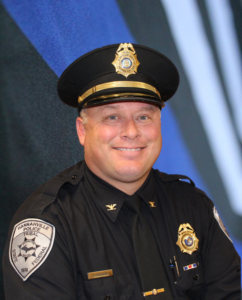A stitch in time: Local man keeps history of sewing machines alive

R. R. Branstrom | Daily Press Larry Klope stitches leacher using a Singer 29, a machine nicknamed the “patcher.” With a small bobbin, a narrow arm and a head that spins 360 degrees, it was often used by cobblers to make shoe repairs.

R. R. Branstrom | Daily Press
A Bonis fur-stitching machine is shown with lambskin that Larry Klope has been asked to make into Mongolian-style hats by attendees of the North American Hill Sheep Show.
ESCANABA — Lawrence “Larry” Klope’s passion and knack for working with antique sewing and knitting machines may be innate. Perhaps his interest in the subject material stemmed from growing up with a mother who sewed commercially. In any case, his hobby grew after he retired from a career as a mechanical engineer.
“I learned how to sew from my mom when I was little, and I just decided in my retirement I wanted to do something different,” Klope said.
He explained that tinkering with vintage sewing machines still used his skillset in mechanics but wasn’t as rough on his hands as heavy machinery was. For work, he had been employed with John Deere, Harnischfeger, and AGRA Industries.
Klope refers to the improvements he makes to vintage machines as refurbishment, not restoration.
“I like taking these old machines and putting them back into working condition,” he said.
A few of Klope’s pieces are on display at the Knit & Stitch, the shop he keeps at the Antique Village on the U.P. State Fairgrounds, and they also make occasional appearances at events like the Home and Garden Show when Klope rents booth space.
“It’s funny, you never know what’s going to wind up taking with the public,” Larry remarked, showing off the one machine he “can’t put away” because it’s such a hit with kids — a Gearhart sock-knitting machine.
While most domestic machines are good for general minor sewing work, they are “masters of nothing,” as Klope puts it. Industrial single-function machines are the complete opposite.
“These machines, for the most part, are built to do one job, one job only, 24/7, 365,” said Klope.
Easily controlled by cranking a handle clockwise, the Gearhart device completes 72 stitches each time it goes around, making “a spiral of interlocked loops,” essentially a long tube for the leg of a sock.
Knope’s sock machine, which he bought from an antique shop in Wisconsin, is from the 1920s and was probably used in a home. Some companies would offer contracts, paying people for their labor to knit socks to their specifications and then buying the finished garments from them.
A rarer machine that Knope has acquired is one used for stitching ladies’ gloves. After finding one for the shopkeeper of the Woolly Sock — another in the Antique Village — and figuring out how to get all the pieces together without a manual, he later bought another for himself.
Several sewing machines are operated with foot pedals called treadles, including one in the Knit & Stitch that stands as a classic example “very typical of a dressmaker or tailor,” Klope said. It has a large flywheel, and Klope said that it’s been fun to work with.
A fairly recent acquisition of his is a Bonis machine made for stitching together furs and other heavy materials. After meeting some women at the North American Hill Sheep Show who were interested in having garments made using their sheepskin, Klope is now working on making Mongolian-style fur hats for them.
It’s not exclusively sewing machines at the Knit & Stitch — also on display is a gasoline iron. Made for ironing clothes and powered by pressurized fuel, the Coleman Model 4A was manufactured between 1929 and 1948. Noting the dangerous nature of the item, Klope said he’ll try it out one day, but not indoors.
Though the machines for which Klope has an affinity are purely mechanical and several in his collection are over a century old, he teaches sewing classes at the Upper Peninsula State Fairgrounds on relatively modern machines.
The purpose of the classes is simply to teach people how to sew because Klope and others in the “textile guild” — a subgroup of the U.P. Steam and Gas Engine Association, which turns 50 years old this year — had identified that young people weren’t being taught hands-on skills anymore. The courses exist so that people may gain the practical education to complete everyday sewing and repairs for themselves.
Members of the public may visit the Knit & Stitch and many other interesting shops and stations at the Antique Village on Thursdays this summer between 12 and 4 p.m. While the village can get extremely busy during the fair and the Steam and Gas Engine Association’s annual show, Thursdays in June and July are good times to get more thorough interactions and hands-on experience.





